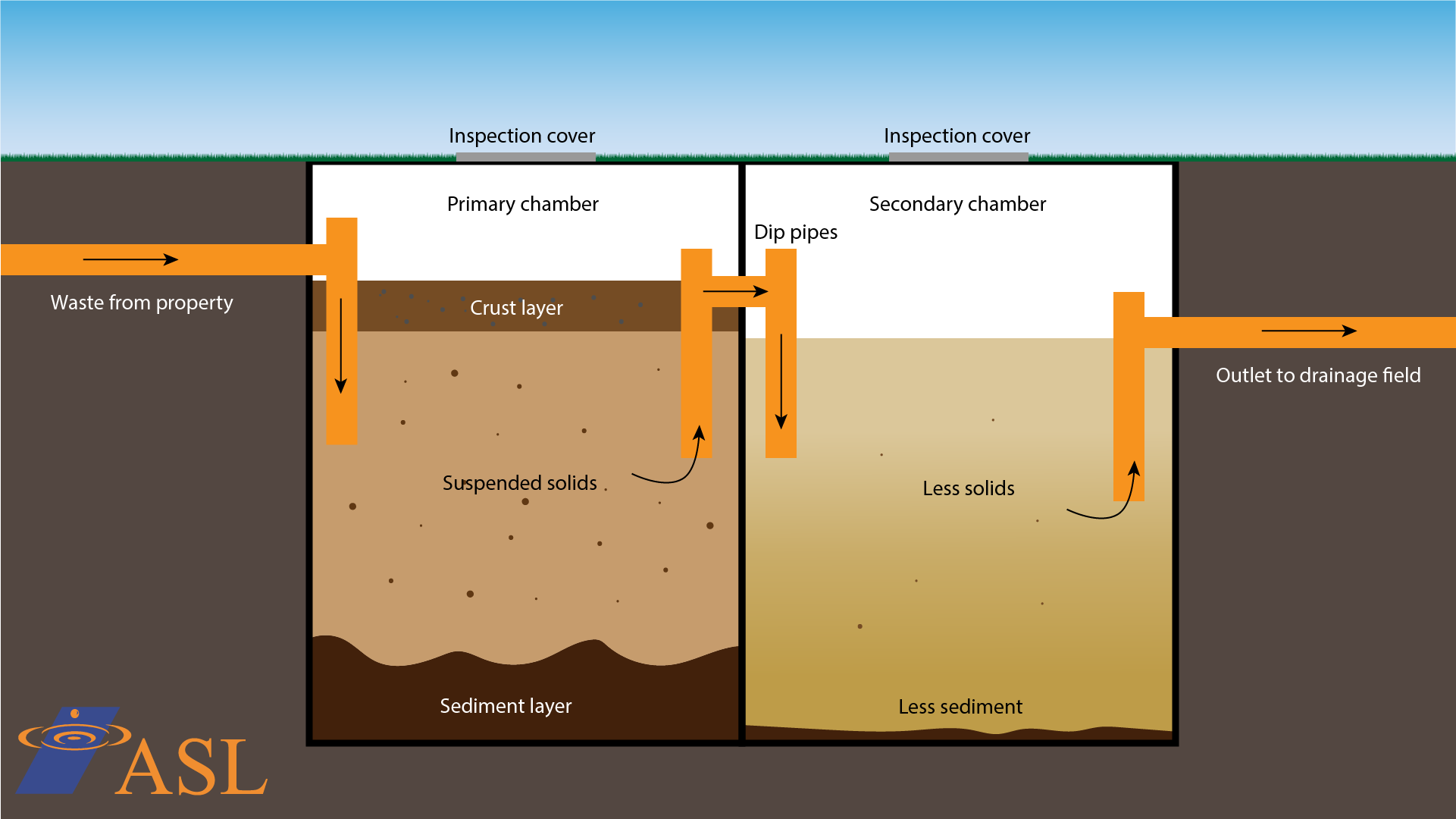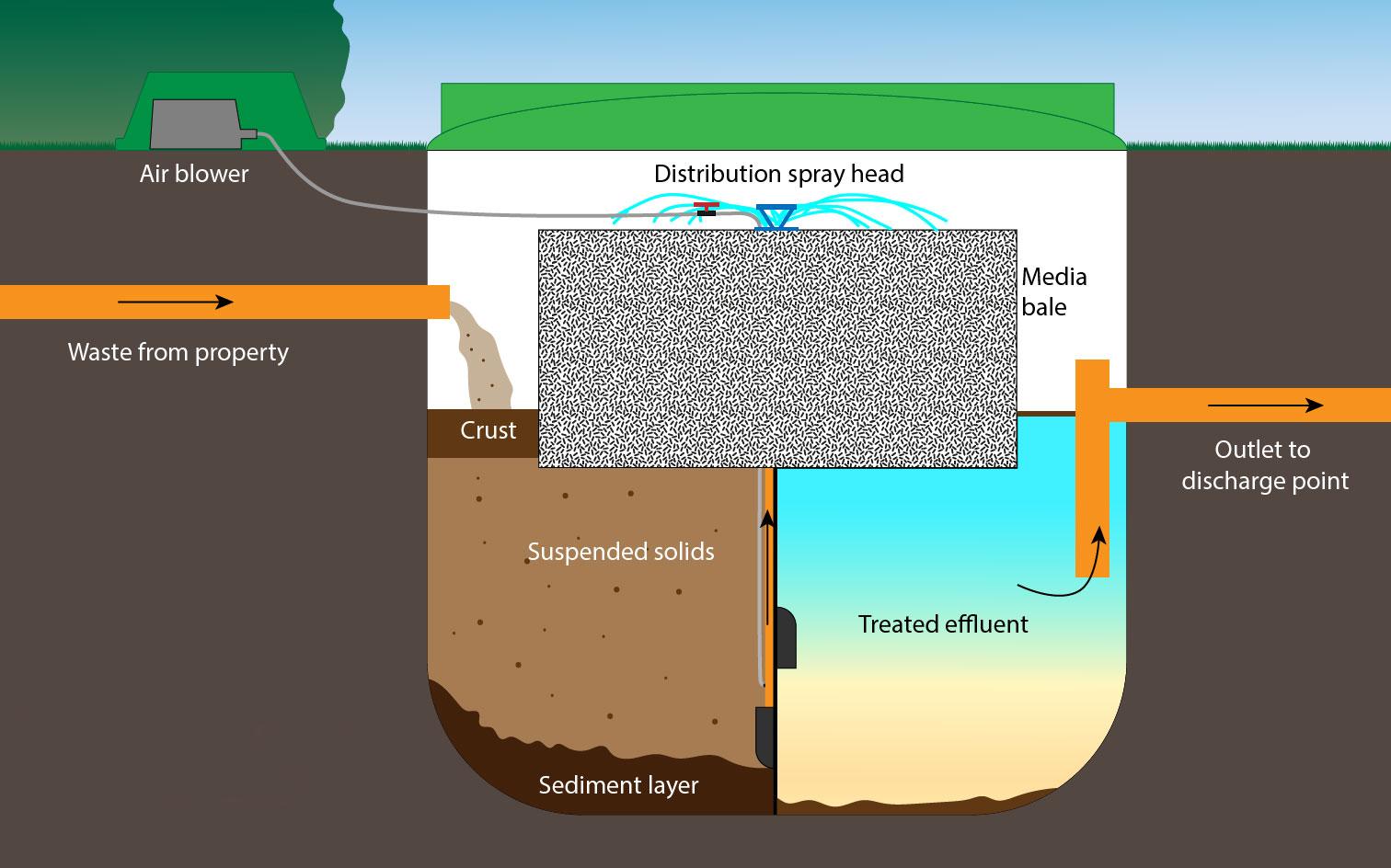What's the difference between septic tanks and private treatment plants?
This is one of the most common questions asked.
No wonder. The names sound similar, and both deal with sewage.
But the way they work? Very different.
Let's keep it simple.
A septic tank just stores and settles.

A septic tank is like a holding tank.
It separates the solids from the liquid.
The solids sink, the lighter waste floats, and the liquid in between goes off to a drainage field (also called a soakaway).
✅ No electricity
✅ No moving parts
⚠️ But it needs space to drain properly, and it needs emptying
You can't let it discharge to a ditch, stream, or waterway anymore.
That was banned years ago.
It's a decent system if your land drains well and if you've got space for a proper soakaway.
But without that?
You'll end up with smells, slow drainage, or even pollution.
A treatment plant does the job properly.

A treatment plant goes further.
It treats the sewage using air and live bacteria, breaking it down, digesting the solids, and cleaning the water.
The liquid that comes out the other side is much cleaner.
So it can be discharged to:
- A ditch
- A stream
- A watercourse
- Or even (with permission) a man-made soakaway
But only if it's installed correctly and meets the binding rules.
Some smaller treatment plants don't need a permit if everything's done properly and it discharges into the right place.
⚡ It does need power
🔧 It needs regular servicing, usually once a year
🧼 But it's cleaner, quieter, and more reliable long-term
One thing people often get wrong.
People often think:
"I'll just replace my old septic tank with the same."
But:
- The land might not drain like it used to
- The rules have changed
- The wrong choice could cost you twice
Sometimes the system gets split up when replaced, and then you lose the natural separation the old tank had.
That's where you need a proper holding tank and tankering every 6 to 12 months, depending on size and usage.
Small tanks on commercial properties often need emptying every 6 months or less.
Which one's right for you?
If your land soaks well and there's space, a septic tank can work.
If not, a treatment plant is usually the safer, more legal choice.
Both have been installed across Surrey, Hampshire, West Sussex and Berkshire.
The check always includes:
- The soil
- The water table
- The land levels
- The discharge rules
- What permissions are needed
This has been done hundreds of times, and it's always explained clearly.
Still not sure what you've got, or what you need?
📞 Call ASL Limited on 0800 181 684. The system will be checked, the options explained, and you'll be legal and protected.
We cover Surrey, Berkshire, Hampshire, West Sussex and South West London.
Related services.
To learn more about how ASL Limited can help with your private sewage system:

